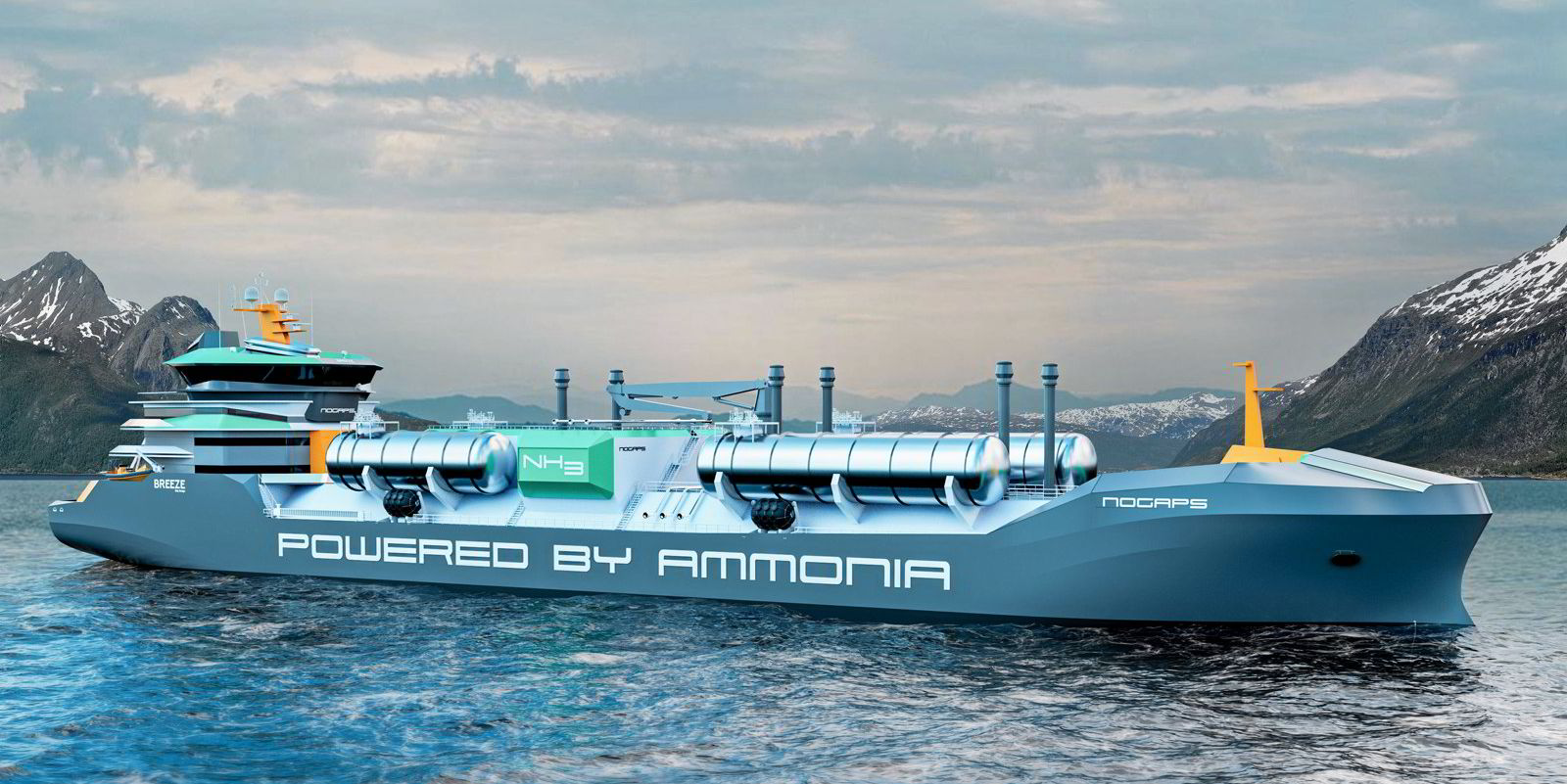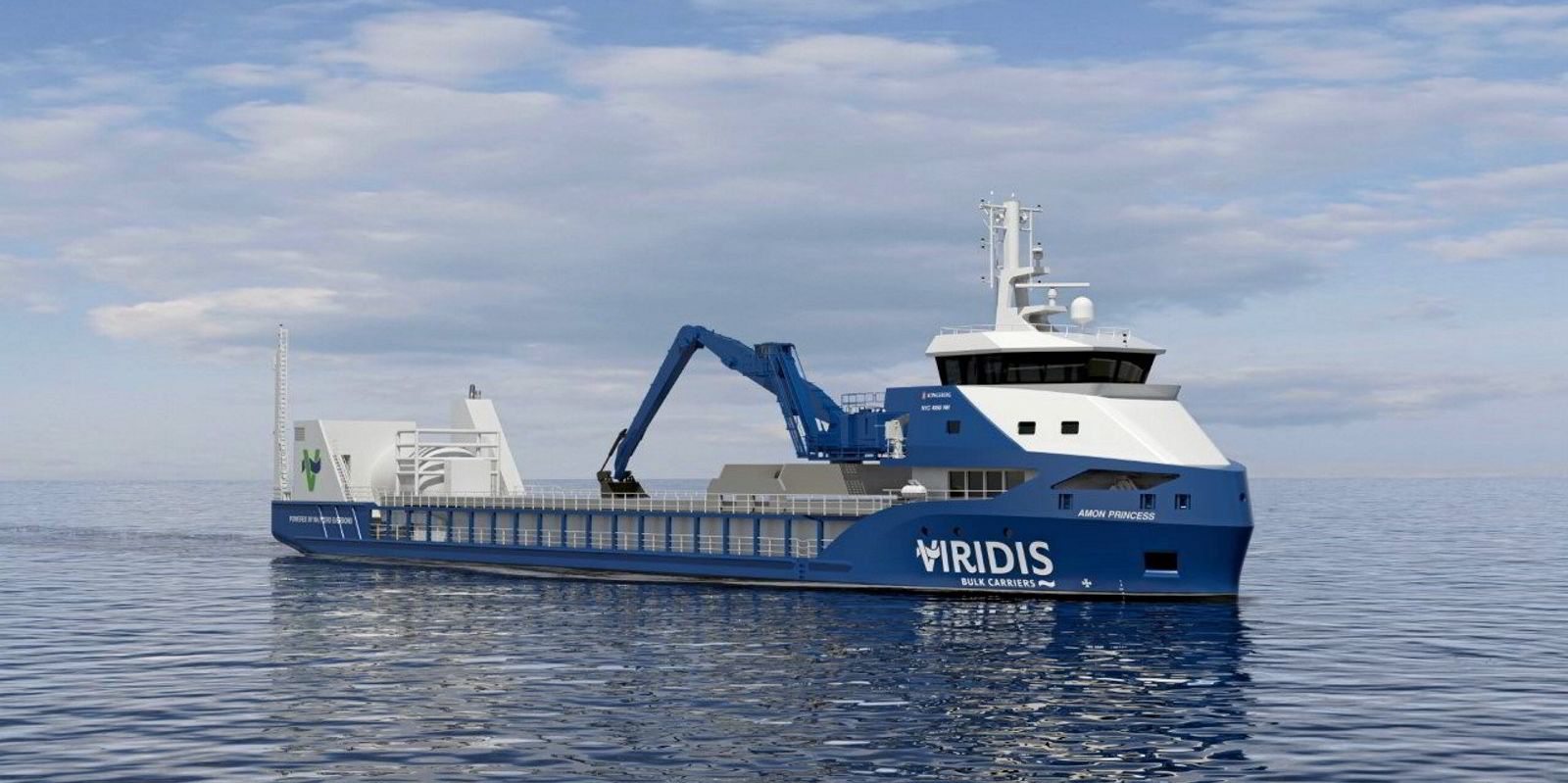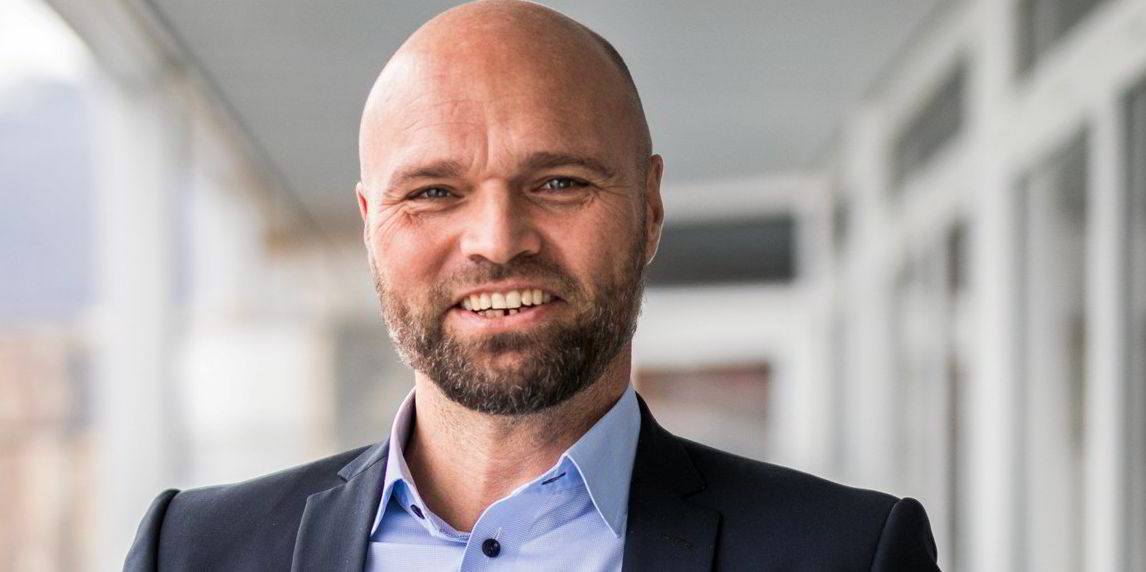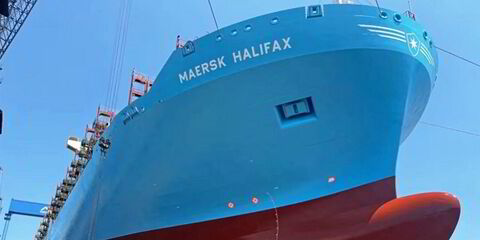The conceptual design of the Nordic Green Ammonia Powered Ships (NoGaps) project has been revealed ahead of final plans for a handysize gas carrier to be submitted this summer ready for a commercial decision on whether to go ahead with building a ship.
The feasibility design for a 22,000-cbm ammonia-fuelled gas carrier optimised for commercial operation in the North Atlantic and north-western Europe has focused on overcoming challenges, including onboard storage and use of ammonia, fuel management and safety, vessel emissions, regulation and certification.
Design work was led by the Maersk Mc-Kinney Moller Center for Zero Carbon Shipping, with the Global Maritime Forum as overall project leader. The intention is to lay the foundations for a shipyard tender and the potential construction and commercial operation of the vessel.
The project partners — gas carrier owner BW Epic Kosan and ammonia producer and potential charterer Yara International — will be in a position to make a decision whether to go ahead with a vessel after the final detailed stage of the project reports in June.
Claus Graugaard, chief technology officer – onboard vessel solutions at the Maersk Mc-Kinney Moller Center for Zero Carbon Shipping, said: “The commercial intention has been a very strong driver for this study. It is not just another desktop study.
“It has done all the front-end engineering all the way up to serving on a silver plate that you can be comfortable that this is doable, safe and realisable — and then it is up to the decision-makers to follow their green transition strategy and do the final investment decision on a business agreement.”
Also involved in the project are engine makers MAN Energy Solutions and Wartsila, class society DNV, co-funder Nordic Innovation, the Danish Maritime Authority as flag representative, and Breeze Ship Design.
The feasibility design has made important decisions on factors including whether to use forward or aft accommodation locations for safety reasons and deciding between an ammonia-electric propulsion system with a four-stroke main engine or an ammonia-mechanical solution with a two-stroke engine.
Hazards, and opportunities considered during the design process, include the properties of ammonia and their effects on human health and the environment, flammability, explosiveness, and corrosion.
The study report said the project has now entered the design phase to incorporate key decisions and outcomes from the feasibility project and increase the level of detail and analysis.
This includes kicking off the initial design development, a hazard identification qualitative risk assessment workshop, optimisation of vessel efficiency, submission of design drawings and documentation to target approval in principle from DNV, and an initial design package that can be used for submission to shipyards.
“Our assessment of the machinery configurations concluded with selecting the two-stroke option. This was mainly driven by the lower fuel consumption and reduced emissions,” the report said.
It also contributes to a simplified safety concept with a single ammonia consumer onboard maximising the reduction of potential emissions, it said.
Other design aspects were also evaluated, including fuel tank location and size, bunkering capability and ship stability.
“We have concluded that further studies on the vessel’s bunkering capability, including installing a bow thruster, are needed as it presents a flexible option for the vessel’s owner,” it said.
It added that the main engine will be the only ammonia consumer with auxiliary engines and boiler, if needed, being fuelled by conventional or biofuels.
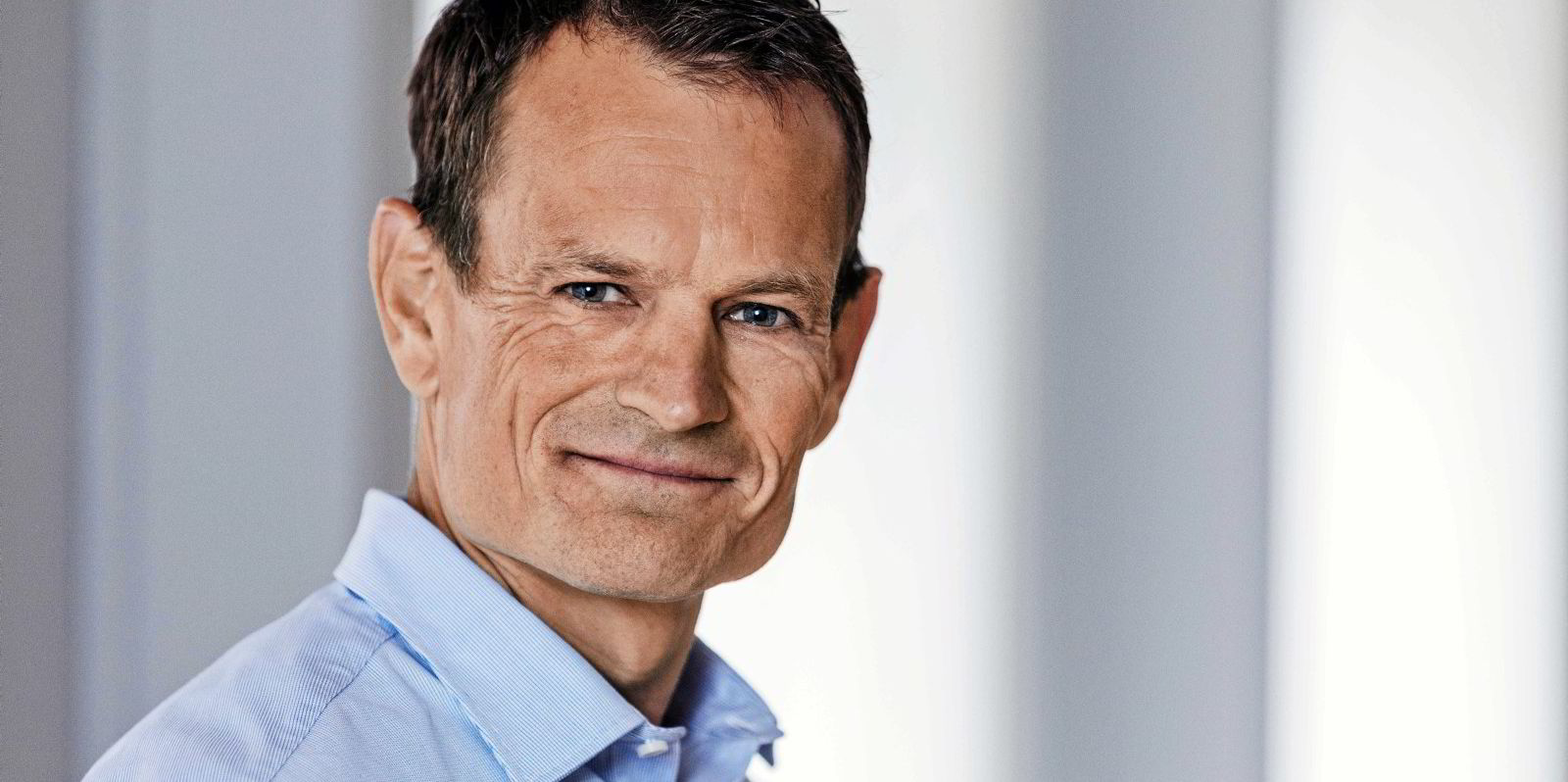
Aft accommodation was preferred as it was decided forward accommodation has disadvantages in situations involving mustering for firefighting, man overboard, abandoning ship, emergency operation of steering gear and pitch, response to engine room alarms, and fighting piracy.
This was despite forward accommodation making the response to managing potential leakages or releases at sea easier mitigating crew exposure to potential leakages, both from cargo area vent masts and engine room-related equipment.
A more compact and comfortable arrangement with one less deck was also possible in the aft configuration with the exhaust funnel, rescue boat, freefall lifeboat, and provision crane all placed in the area.
The cargo section is conventional and comparable to LPG carriers, with the potential for leakage expected to be greatest during cargo operations in port. This added to the decision on aft accommodation since only one wind direction would lead to entry into staffed areas.
The fuel system would have the same safety requirement as cargo piping but, as the risk of leakages is greater due to higher pressures and exposure to vibrating engines, the fuel handling and treatment system would be placed in a deck house with its own ventilation.
Ammonia fuel tanks have been given a capacity of 3,450 cbm to allow for a roundtrip voyage from the Gulf of Mexico to north-west Europe of about 12,000 nautical miles, with a four-day safety margin included. Voyages would be laden eastbound and in ballast westbound.
The International Code of the Construction and Equipment of Ships Carrying Liquefied Gases in Bulk (the IGC Code) currently does not permit cargoes identified as toxic products such as ammonia to be used as fuel, but the report said there is an opportunity to seek acceptance by the flag administration by justifying equivalent levels of safety using a risk-based design process.
Graugaard said the ambition is to develop a business case for the vessel to be able to carry blue and green ammonia cargoes. He added that as a ship would come under the European Union’s Emissions Trading System when operating in European waters, it would get a green taxation benefit when operating on low-emission ammonia as a fuel.
“We are working closely with our partners in other projects to qualify ammonia as a sustainable marine fuel, including the safety case,” he added, with this intelligence also transferring to the NoGaps design as an open innovation development.
